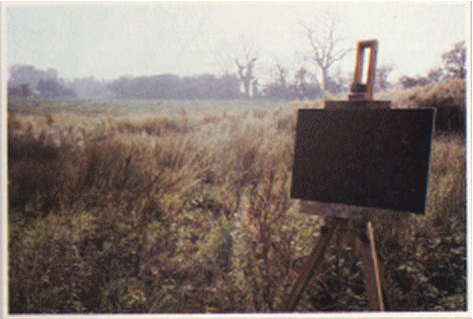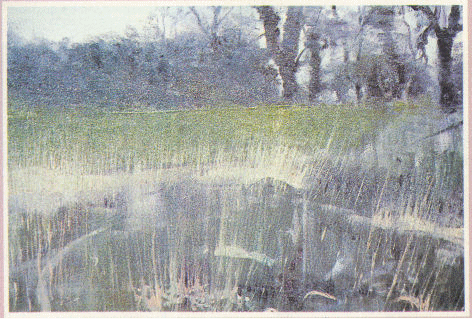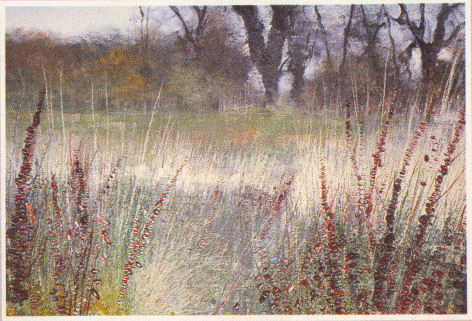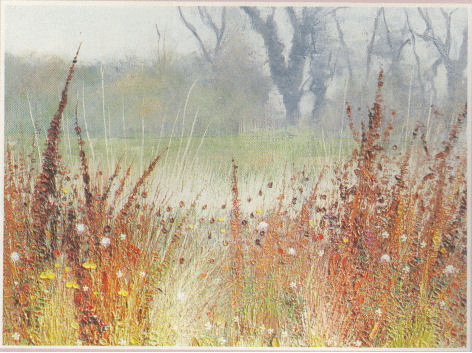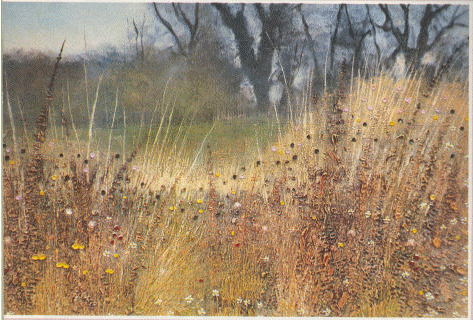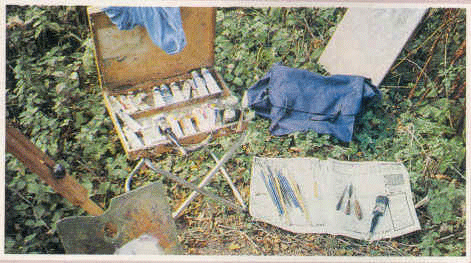I first painted the Suffolk landscape as a child in Bury St Edmunds.
‘Those distant days provide the foundations to my artistic development. Many hours were spent exploring the quiet beauty of a landscape swept by ever-changing skies and bathed in a magical light. What seemed to me then most wonderful of all was possessing the ability to express in paint my feelings towards this landscape, a sentiment that has remained with me. I returned to Suffolk with my family in 1984, after an absence of 16 years.
Living now near the coast has heightened the magic: the countryside retains its quiet and dignified beauty with the sea just beyond the fields adding so much more. There is much variety in the landscape here, embraced by a purity of light or shrouded in soft-coloured mists. Painting it is a challenge.
The quiet beauty of Suffolk remains, but today there is a disturbing undercurrent which has come to dominate my work. Countryside, which for centuries has provided solace and succour to man and inspiration to art, is crying out in mortal danger.
This new dimension to the Suffolk landscape and seascape, the increasing threat from development and pollution, can no longer be ignored by the landscape painter.
I have always believed in the importance of working in front of the landscape. Breathing the air of the site as work progresses gives life and reality to the painting, vitality to brushwork, vibrancy to colour and an opportunity to become deeply involved in the motif.
Of course, there are problems: the transportation of equipment, bringing home a wet canvas and the variable weather. The only conditions I have found impossible for work are driving wind and rain. Certainly a sturdy easel is essential. In the summer, insects will inevitably walk across areas of delicate colour which are the most difficult to repair!
